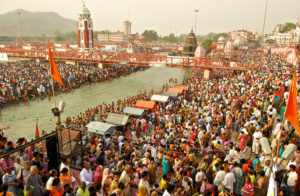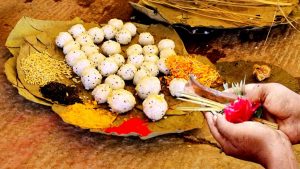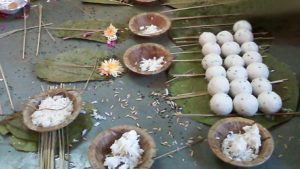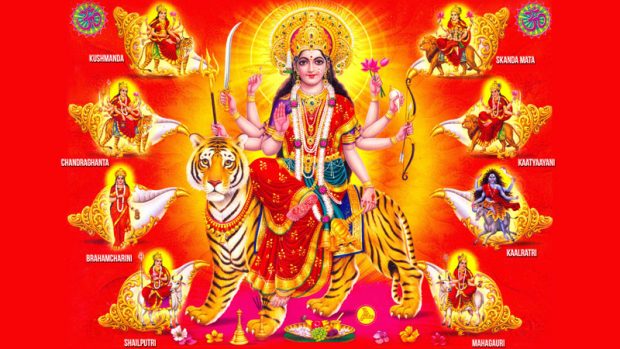Navratri Vrat or Navaratri Vratam
Navratri Vrat or Navaratri Vratam
Navratri Vrat is an important fast observed during the month of Ashvin (September – October). It is believed that the devotees, who perform the fast, will find happiness and attain ‘moksha.’ Goddess Durga narrated the way to observe the fast to her ardent devotee. The Vratam is observed by both men and women and Navratri mantra is repeated during the period. The fast starts from day one, and carries on through the seventh or eighth day, during Navratri. In the latter case, the fast is broken on the ninth day or ‘Navami’. For devotees who observe partial Navratri vrat, the ritual involves breaking the fast after evening puja. There is flexibility in the number of days a devotee can fast. For instance, some people fast only for three days, starting from the first day with a gap of two days. Some devotees choose to fast only on the first and the last day.
Navratri Fasting Procedure
The devotee takes an early bath and dress in clean and fresh clothes. The devotee performs a puja. This comprises mantra chanting, lighting of diya or ‘jyot’, recitation of shlokas from Durga Saptashati and preparation and offering of ‘prasad’ made to Ma Durga or Mata Rani. Food must be prepared without onions and garlic. ‘Bhog’ or ‘Naivedyam’ is offered to Mata Rani or Goddess. Bhajans are sung. In the evening, puja and ‘aarti’ are performed and ‘prasad’ is offered to the Goddess.
At night, large groups of devotees participate in ‘jagran’ and are awake all night singing ‘bhajans’ and ‘hymns’ dedicated to Ma Durga. It is a common practice among devotees to eat only one meal a day after the evening puja. Throughout the fasting period, apart from eating a vegetarian diet, devotees observe ‘niyamas’, like sleeping on the floor, not shaving or cutting nails and keeping away from recreational activities. Charity during this time is especially satisfying for the devotees.
Some devotees break their fast on the eighth day (Ashtami) and some on the ninth day (Navami). The procedure is to carry out ‘Kanya’ or ‘Kanchika Pujan’ wherein nine girls are worshipped and their feet washed. After this, they are treated to a spread of puri, halwa and chana and gifted handkerchief/clothes and money as a token. The nine ‘kumari kanya’, then, give blessings to the devotees observing Navratri vrat, after which they break their fast. On the ninth day, it is considered auspicious to offer ‘dakshina’ to the Brahmin.
The most popular food preparations include Kuttu Ki Puri, Singhade Ka Halwa, Singhare Ke Pakore, Khuskhus Aloo, Sabudana Vada and Sabudana Khichdi. Some of the typical food ingredients to prepare these include Kuttu atta or buckwheat flour, Singhara atta, Sabudana or tapioca and foxnuts. During Navratri, markets are flooded with ‘vrat’ packaged snacks. For devotees observing Navratri fast, special Navratri ‘thalis’ offering an assortment of preparations are available in restaurants and eating joints.
Food not allowed in Navratri Vrat
Onion, Garlic are strictly avoided. Grains and cereal and besan are avoided. Legumes and all dals are avoided. Common Salt, turmeric, asafoetida, garam masala and dhaniya powder is avoided.
Food Allowed in Navratri Vrat
Flours and Grains such as Kuttu Atta (buckwheat flour), Singhara Atta (water chestnut flour), Rajgira Atta(amaranth flour), Sama Chawal (barnyard milet), Sabudana (Sago/tapioca pearls), Makhana (Foxnuts) are allowed. Fruits and Vegetables are allowed. Milk Products and Dry Fruits, Herbs and Spices are allowed.
Reach us to be a part of our whatsapp spiritual reminder group








